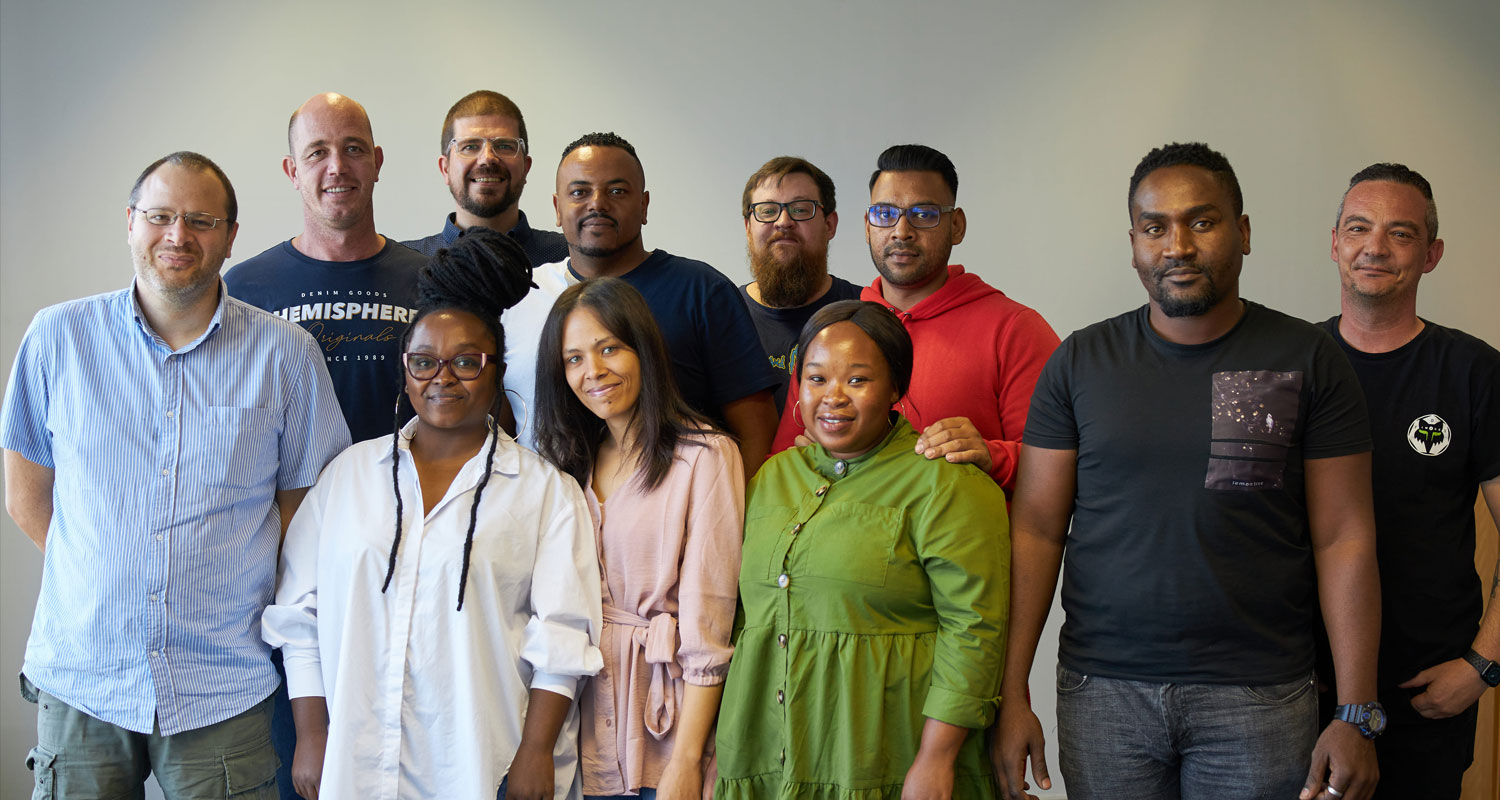
Whether it’s responding to a late-night crisis, delivering effective monitoring to a client and building the foundation for an effective IT monitoring team, people always come first.
That’s the firm conviction of Daniel Verwey, head of customer services at Sourcing. The company provides monitoring as a service to many household name brands including TymeBank, the Ignition Group and KFC. Verwey insists that its success all starts with the human element.
The value of the human-centric approach was especially apparent during the pandemic. Obviously people need the right tools, and Verwey started putting those in place long before Covid-19 afflicted the world.
Learn more at www.sourcing.co.za
“By the time we had to transition to virtual meetings, it was easy because we’d put that technology in place long before the pandemic,” he says. “So, we could start our days off with team calls, cameras on, evaluate who’s smiling and who’s not, and assess their emotional state before doing anything else.”
Verwey’s approach to client service is an inside-out, three-step process. “First, look after yourself, and then look after your family, because if either of those fails you won’t be able to take the third step: looking after your client.”
Business beyond the technology
Sourcing’s approach starts with the first customer engagement where the client’s business is explored in detail.
Says Verwey: “Our business development team is strongly client centric. This sets the tone for each engagement — we endeavour to prioritise understanding as much of a new customer’s business, business processes, ICT landscape and problem statements as quickly as possible. Then we tailor a service specific to the customer’s needs. It’s this genuine interest in ensuring the client’s success that builds collegial client relationships, and even friendships.”
Clients seem to agree. As recently pointed out by Russell Stather, Ignition’s chief digital transformation officer: “Because the people at Sourcing got close to our business and spent a lot of time understanding what we are doing, by the time we signed up there was no doubt in anybody’s mind that it was going to be a success from day one. This was about very much more than the technology – it was the people and the implementation team that made sure it was a success,” says Stather.
That trust relationship is extended and bolstered by making sure that every member of Sourcing’s team is directly exposed to the client interface and understands and feels the client’s pain when systems go down. “Every single person on the team acts as service delivery manager to at least one customer,” says Verwey. “This way we create awareness of the challenges that exist in each customer’s environment and how to successfully manage them. More importantly, it gives team members at every level of our organisation the chance to build deep customer relationships, without which no service would succeed.”
A step further – the client’s humanity
The client’s needs and staff are as important as those of the Sourcing team’s if monitoring is to be effective. As Verwey points out, you must consider the personality of the person you’re working with, and how they digest information. “You can’t just send them a generic report and say, ‘This is how we provide the information; you must adapt.’ Some clients prefer numbers, others need graphic representations — we try to tailor our approach to their needs as much as reasonably possible.”
The second aspect of a people-centric approach is in empathy and understanding when reporting an outage to a client. We understand that this represents a crisis for our customer and them knowing that we feel their distress is an indispensable part of the client relationship.
Converting observability outputs from on-premises, hybrid or cloud technologies into actionable operational processes is the key to monitoring value. Otherwise, it’s just data.
Event management puts the right information in front of the right person at the right time. This triggers the client’s incident and fault resolution processes; critical to system and service uptime and avoiding reputational damage.
A way of life
Making monitoring a way of life intrinsically instils compassion for the people we provide the service to. We are a lifeline for our customers. Naturally, our people-centric focus doesn’t negate the need for appropriate technology, and technology skills. “Our customer service team is highly skilled in technical integrations, governance, ITSM, and project management methodologies and frameworks,” Verwey explains.
“Any new process is first run manually to eliminate problems — before it is automated. Our proprietary operations monitoring architecture (OMA) provides great flexibility and quick response to customer requirements in monitoring new technologies or adapting to evolving business processes,” he says.
Nobody likes to be caught unaware when a business process or technology fails — it causes embarrassment and reputational damage and potential loss of revenue. Therefore, the monitoring service must always be available. For this reason, we developed our own monitoring technology, we host the service in our own data centre, and have the inhouse skills to maintain and scale the platform as required.
It’s the perfect blend of technology, process and the people. “The culture, platform and individual skills in the team allow us to innovate and adapt quickly to market changes and customer requirements in a way that competitors with shrink-wrapped products find hard to match,” says Verwey.
Sourcing, The Monitoring Company, is a global monitoring service provider that can help you tackle and solve your IT infrastructure monitoring problems today, using a single technology platform covering hundreds of technology integrations and wrapped in class-leading service methodology.
- This promoted content was paid for by the party concerned

